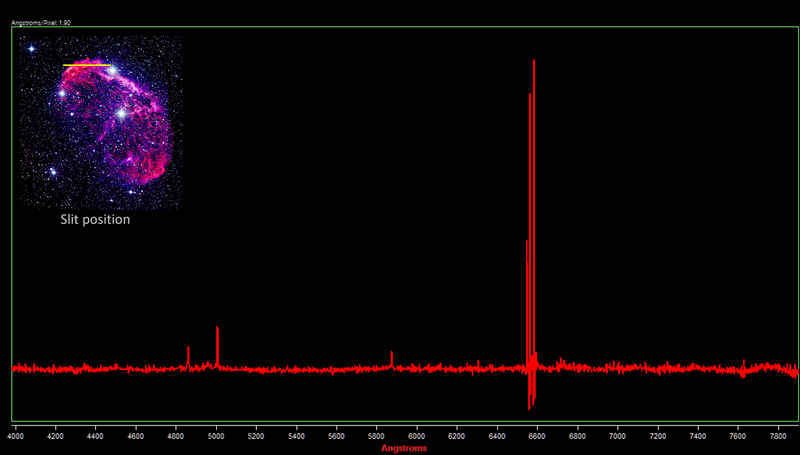NGC 6888, Spectra of regions of the Crescent Nebula in Cygnus
Background information and spectra
|
aka: Sharpless 105, Caldwell 27
The Crescent nebula, discovered in 1792 by William Hrschel, is an emission nebula.
It arises from the stellar wind from the
The energetic wind is interacting with material blown off the star when
it was in the red giant phase about 300,000 years ago. Image of NGC6888 is here
Spectra of various regions of NGC 6888Region 1 - Bright red reqion in north Spectrum shows weak oxygen, strong nitrogen and traces of heliom and sulphur. Blue region weak, probably due to dust.
Region 2 - Bright bluer region Stronger oxygen, weaker nitrogen. Less dust?
Region 3 - Fainter knot in lower area Stronger nitrogen and sulphur.
Region 4 - Bright red reqion in south Similar to Region 1 with stronger blue - less dust? |
2 / 27